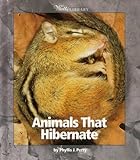Lesson 2: Using Text Features to Find Information
Lesson Plan
Animals That Hibernate | 1000L

- Learning Goal
- Develop research questions.
- Classify and categorize information into an outline form.
- Use the features of nonfiction to identify information relevant to a research question.
- Duration
- Approximately 50 minutes
- Necessary Materials
- Provided: Direct Teaching/Guided Practice Example Chart, Guided Practice Example Outline, Independent Practice Worksheet
Not Provided: Animals That Hibernate by Phyllis J. Perry, chart paper, markers, glue, tape
-
Teacher Modeling

will model identifying three research questions about a specific topic: hibernation. I will chart my three questions. (Direct Teaching and Guided Practice Example Chart is provided below in Teacher and Student Materials.) I will use the table of contents and headings within the chapters of Animals That Hibernate by Phyllis J. Perry, to find the answers to my questions. I will read for relevant information in Chapters 2–6, and classify and categorize information based on which question the information answers.
-
Think Check
Ask: How did I use the table of contents and the headings to help me find information from the book? Students should respond that you identified a question before reading. Then you read the headings and table of contents to help you look for key words and phrases to answer your research questions. Finally, you read the text, and wrote down important pieces of information in an outline.
-
Guided Practice

will use the information from our notes to create an outline. (Guided Practice Example Outline is provided in 'Text & Materials' tab.) We will categorize our information into the type of place where the animal hibernates.
-
Independent Practice

will write a research question about a specific topic of your choice. You will find books that will answer your three questions. You will also use the table of contents and headings within the chapters to find the relevant parts of the book that answer your research questions. You will record the new information as notes, and then classify and categorize your notes into an outline. (Student Independent Practice is provided below.) Note: Students will need a variety of nonfiction materials on various topics and reading levels. Your school or community library is a good resource for this lesson. Students will need to save the outline they create for Independent Practice for use in Lesson 3.
TIP: Have students choose topics connected to what they are currently learning in social studies and/or science as a way to develop a thematic unit of study that meets learning outcomes for multiple subjects.
Texts & Materials
Standards Alignment
(To see all of the ReadWorks lessons aligned to your standards, click here.)



